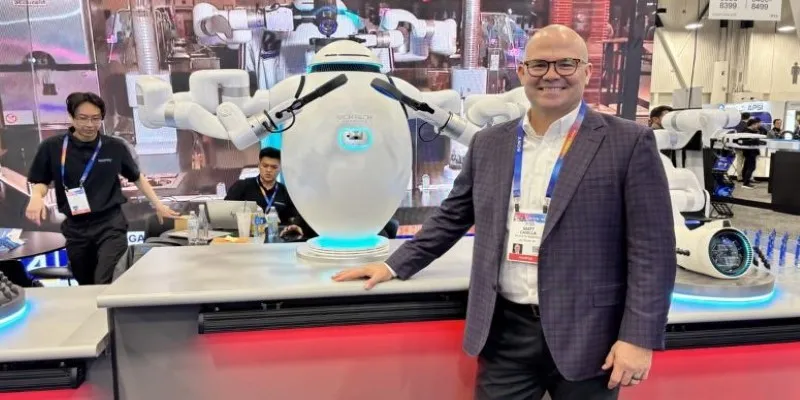At CES 2025 in Las Vegas, an Italian self-driving supercar turned heads not just for its sleek design but also for how seamlessly it blended artificial intelligence with high-performance engineering. Italian automakers are renowned for crafting machines that thrill on the road, but this car offered a vision of the future where speed, safety, and smart technology coexist.
Visitors gathered around the glowing exhibit to watch as the AI-powered vehicle demonstrated not only autonomous driving but also adaptive behavior suited for different terrains and driving styles. It represented a shift in how the world sees luxury and innovation.
A New Chapter for Italian Automotive Craft
Italy’s automotive history has always been about passion and precision, with marques like Ferrari, Lamborghini, and Maserati symbolizing engineering excellence. At CES 2025, this self-driving supercar paid homage to that heritage while stepping into the future. The vehicle was developed by a Milan-based startup in collaboration with seasoned engineers and AI researchers from Turin Polytechnic. Unlike most autonomous vehicles, which tend to prioritize function over form, this car stood out as a true supercar—low-slung, aggressive in its stance, with carbon fiber curves that reminded everyone this was still, at its heart, a machine built to excite.

What made the car remarkable was how the artificial intelligence system complemented that traditional appeal. Instead of simply handling navigation and obstacle detection, it actively learned the preferences of its driver, adjusting acceleration, cornering behavior, and even interior ambiance. When in fully autonomous mode, the car could anticipate changes in traffic and weather patterns well ahead of time, making adjustments that kept both performance and safety optimal.
The AI That Drives Like a Human—And Learns Like One Too
One of the standout aspects of the Italian self-driving supercar was the intelligence behind the wheel. Engineers at the unveiling explained that the AI wasn’t just programmed with a rigid set of rules. Instead, it was designed to learn and adapt through continuous interaction with its environment and its driver. During testing, the car was driven across Italian mountain roads, narrow city alleys, and the wide highways of the United States to train its neural networks on varied scenarios.
The car’s AI used a combination of lidar, cameras, radar, and thermal imaging to create a three-dimensional understanding of its surroundings. What set it apart was its predictive capability—it didn’t just react to obstacles but forecasted potential issues by observing patterns in nearby traffic. For example, if a vehicle ahead displayed erratic movements, the system adjusted speed and maintained a safer buffer even before a human driver might notice.
Another layer to its intelligence was personalization. After several hours of use, the car recognized its driver’s style, whether they preferred sharp or smooth turns, aggressive or relaxed acceleration, and even how they liked the cabin lighting at night. Through its machine learning algorithms, the supercar became more attuned to delivering a driving experience that felt natural and intuitive rather than artificial. This human-centric AI design distinguished it from the more utilitarian autonomous models already on the market.
Italian Design Meets Next-Generation Technology
Beyond its brains, the supercar’s aesthetic drew constant praise throughout CES. Visitors stopped not just to marvel at the software running the show but at the flowing bodywork and interior details. The car’s exterior featured active aerodynamic elements that adjusted in real time, directed by the AI, to reduce drag on highways or increase downforce on twisty roads. These changes were subtle yet effective, and all happened without the driver having to press a single button.

Inside, the cabin carried a minimalist yet luxurious feel. Touchscreens and haptic feedback controls replaced traditional buttons, but the car maintained a driver-focused cockpit that didn’t feel sterile. The AI assisted with everything from adjusting seat posture based on driver fatigue levels to altering temperature and air circulation according to outside weather. An advanced voice interface allowed conversations with the AI, which answered naturally and even offered route suggestions based on personal preferences, traffic updates, and points of interest.
There was a deliberate attempt to ensure the technology never overshadowed the sense of connection that drivers traditionally feel with Italian cars. By blending digital intelligence with tactile design cues—like a sculpted steering wheel and premium upholstery—the team succeeded in keeping the experience engaging and emotional.
Redefining Performance and Safety Standards
The supercar’s performance figures were impressive on their own, with its all-electric drivetrain delivering instant torque and a top speed worthy of the Italian badge it carried. But more than numbers, it was how the car balanced performance with safety that made it notable. The AI constantly monitored tire grip, battery temperature, and road conditions, ensuring the car stayed within safe limits even during spirited driving.
Autonomous driving modes included not just city and highway but also a dedicated “Sport” mode where the AI simulated the thrill of manual driving while keeping the car’s systems in check. This lets enthusiasts experience the thrill of sharp cornering and quick acceleration without the risks typically associated with high-speed driving. During CES demonstrations, the car effortlessly handled simulated emergencies, coming to controlled stops when a child mannequin ran across the test track or swerving to avoid debris—all while keeping passengers comfortable.
Safety was enhanced by a fail-safe system that engaged backup processors and sensors if any primary systems malfunctioned. Engineers explained that the car could even contact emergency services autonomously if it detected a serious accident or health issue with its driver, showcasing how AI could actively contribute to passenger well-being beyond just preventing collisions.
A Glimpse of What’s Next
The Italian AI-powered self-driving supercar at CES 2025 offered more than a display of advanced technology. It signaled a future where intelligent systems and emotional driving experiences come together seamlessly. This car showed that autonomous vehicles don’t have to feel cold or mechanical. Instead, they can reflect the personality and preferences of their driver while delivering unmatched safety and performance. The team behind it plans to expand this AI platform to more models, making the technology more accessible while preserving craftsmanship. It’s a step toward a future where driving remains personal, even when machines share control of the wheel.
 zfn9
zfn9























